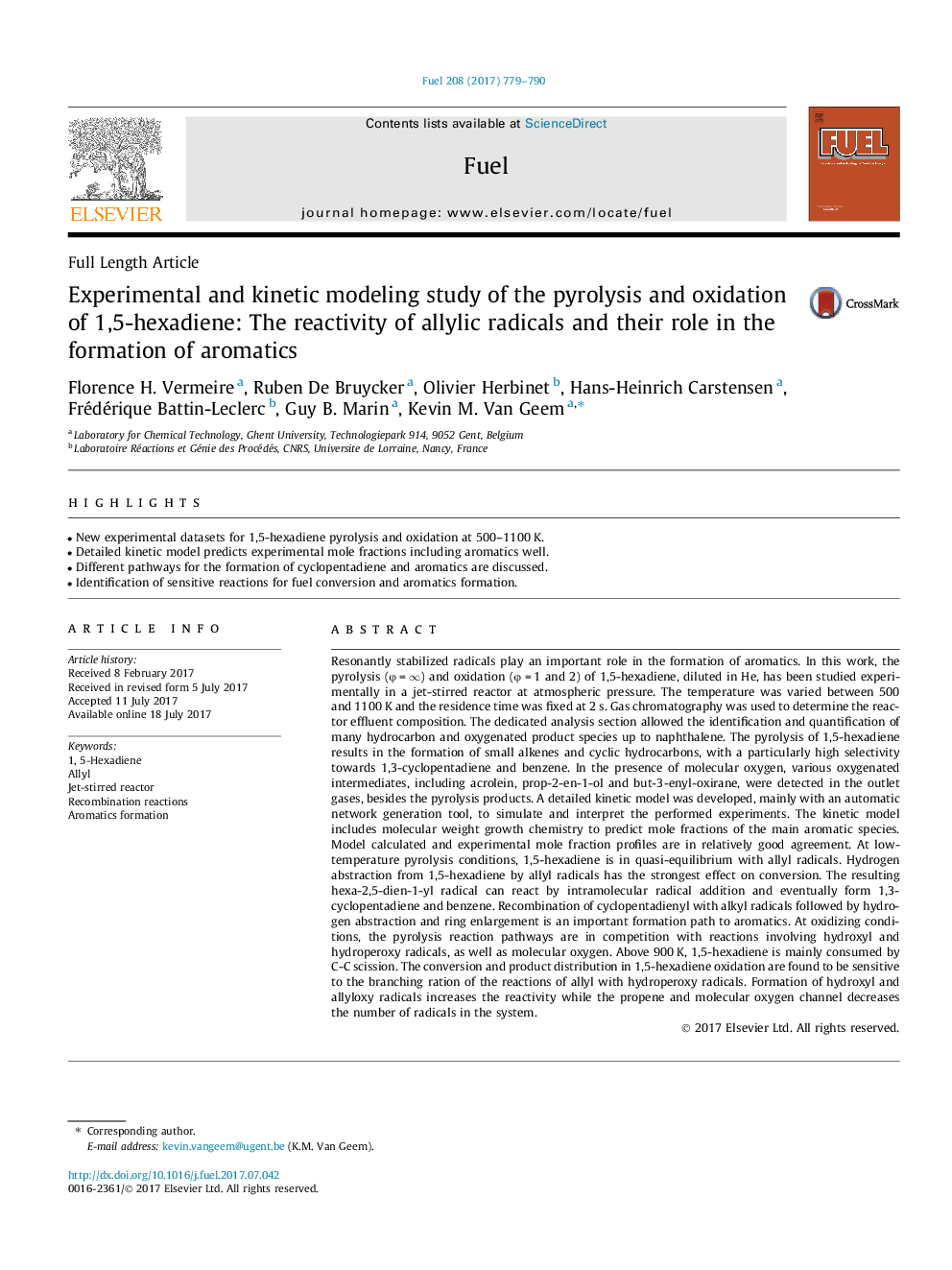| کد مقاله | کد نشریه | سال انتشار | مقاله انگلیسی | نسخه تمام متن |
|---|---|---|---|---|
| 6474251 | 1424956 | 2017 | 12 صفحه PDF | دانلود رایگان |
- New experimental datasets for 1,5-hexadiene pyrolysis and oxidation at 500-1100Â K.
- Detailed kinetic model predicts experimental mole fractions including aromatics well.
- Different pathways for the formation of cyclopentadiene and aromatics are discussed.
- Identification of sensitive reactions for fuel conversion and aromatics formation.
Resonantly stabilized radicals play an important role in the formation of aromatics. In this work, the pyrolysis (ÏÂ =Â â) and oxidation (ÏÂ =Â 1 and 2) of 1,5-hexadiene, diluted in He, has been studied experimentally in a jet-stirred reactor at atmospheric pressure. The temperature was varied between 500 and 1100Â K and the residence time was fixed at 2Â s. Gas chromatography was used to determine the reactor effluent composition. The dedicated analysis section allowed the identification and quantification of many hydrocarbon and oxygenated product species up to naphthalene. The pyrolysis of 1,5-hexadiene results in the formation of small alkenes and cyclic hydrocarbons, with a particularly high selectivity towards 1,3-cyclopentadiene and benzene. In the presence of molecular oxygen, various oxygenated intermediates, including acrolein, prop-2-en-1-ol and but-3-enyl-oxirane, were detected in the outlet gases, besides the pyrolysis products. A detailed kinetic model was developed, mainly with an automatic network generation tool, to simulate and interpret the performed experiments. The kinetic model includes molecular weight growth chemistry to predict mole fractions of the main aromatic species. Model calculated and experimental mole fraction profiles are in relatively good agreement. At low-temperature pyrolysis conditions, 1,5-hexadiene is in quasi-equilibrium with allyl radicals. Hydrogen abstraction from 1,5-hexadiene by allyl radicals has the strongest effect on conversion. The resulting hexa-2,5-dien-1-yl radical can react by intramolecular radical addition and eventually form 1,3-cyclopentadiene and benzene. Recombination of cyclopentadienyl with alkyl radicals followed by hydrogen abstraction and ring enlargement is an important formation path to aromatics. At oxidizing conditions, the pyrolysis reaction pathways are in competition with reactions involving hydroxyl and hydroperoxy radicals, as well as molecular oxygen. Above 900Â K, 1,5-hexadiene is mainly consumed by C-C scission. The conversion and product distribution in 1,5-hexadiene oxidation are found to be sensitive to the branching ration of the reactions of allyl with hydroperoxy radicals. Formation of hydroxyl and allyloxy radicals increases the reactivity while the propene and molecular oxygen channel decreases the number of radicals in the system.
Journal: Fuel - Volume 208, 15 November 2017, Pages 779-790
